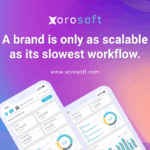
Scaling Success Shouldn’t Lead to Chaos
Scaling should be exciting, not exhausting. But for many companies, inventory management for growing brands becomes a nightmare at 10,000 SKUs. The systems that once worked—spreadsheets, QuickBooks, and disconnected apps—start breaking under the weight of growth. And instead of scaling, your brand begins to stall.
To make matters worse, your team starts chasing missing inventory, reconciling bad data, and firefighting issues that should have been automated long ago. Ultimately, growth becomes a source of pain instead of progress.
Why Inventory Management for Growing Brands Becomes a Growth Barrier
Inventory complexity doesn’t grow linearly—it multiplies. Each product variant adds layers of data: size, color, bundles, warehouse location, reorder points, vendor details, and more. By the time you reach 10,000 SKUs, you’re managing tens of thousands of data points.
Unfortunately, outdated tools simply can’t handle this. As a result, inventory management for growing brands becomes unreliable.
Because of that:
-
Scaling slows down due to inaccurate inventory
-
Margins shrink because of overstocking and stockouts
-
Customer satisfaction drops when orders are late or wrong
In short, inventory operations become a liability rather than an asset.
The Cost of Inventory Chaos at Scale
In the early stages, most teams rely on a patchwork of tools. And while this may work initially, it becomes fragile fast. Typically, companies use:
-
QuickBooks for accounting
-
Spreadsheets for inventory
-
Separate tools for shipping, order management, or fulfillment
-
Manual methods to link it all together
Even though this setup feels lean at first, the cracks grow with every new SKU. For example, tools that once streamlined workflows now become bottlenecks.
Here’s what usually happens:
-
Stockouts and backorders due to inventory mismatches
-
Fulfillment errors that erode customer trust
-
Disconnected systems that update at different times
-
Inability to identify slow-moving or high-margin products
Furthermore, every one of these issues amplifies the others. As a result, internal misalignment turns into customer disappointment. In the long run, this starts to impact profitability and customer retention.
Disconnected Systems Are the Root Cause
The real issue isn’t your staff or your catalog. Instead, it’s the fact that your systems don’t talk to each other.
With no unified source of truth, inventory management for growing brands becomes reactive instead of strategic.
Here’s what breaks down:
-
Your e-commerce platform doesn’t sync in real time
-
The WMS relies on batch updates, not live data
-
Procurement guesses reorder points
-
Finance struggles to calculate accurate COGS
Moreover, this disconnect means your teams operate in silos. Consequently, delays, miscommunication, and costly errors follow. By contrast, unified systems reduce risk and improve accuracy.
How Unified Systems Improve Inventory Management for Growing Brands
Brands that outgrow chaos turn to ERP systems. These platforms replace the patchwork and bring everything under one roof—especially inventory management for growing brands.
A modern ERP gives you:
-
Live inventory updates across all channels and warehouses
-
Built-in WMS with barcode scanning, picking, and real-time receiving
-
Shopify, Amazon, and 3PL integrations
-
Data-driven forecasting and automated purchasing
-
Synchronized financials for real-time profit and loss visibility
As a result, decision-making improves. Teams become more aligned. Consequently, scaling becomes realistic again. With this in mind, ERP adoption is often the smartest move a scaling brand can make.
Xorosoft ERP: Built for Scalable Inventory Management for Growing Brands
Xorosoft ERP is purpose-built for this transition. It’s a cloud-native ERP designed to simplify and scale inventory management for growing brands.
Why Xorosoft stands out:
-
Fast to deploy: Go live in weeks, not months
-
Integrated WMS: No third-party dependency
-
Native integrations with Shopify, Amazon, EDI, and 3PLs
-
Multi-currency and multi-location support
-
Powerful APIs for automation across your stack
Additionally, Xorosoft handles complexity without slowing down. Whether you manage 500 or 50,000 SKUs, the system stays responsive. Even then, it remains user-friendly.
Real Results: What Happens After the Shift
Once you centralize operations, a few powerful shifts happen:
-
Inventory is accurate across platforms
-
Teams work from one set of real-time data
-
Errors drop, efficiency increases
-
You gain time, control, and clarity
Even better, adding new products or channels becomes routine—not risky. As such, the system grows with you. To summarize, your operations evolve from reactive to proactive.









